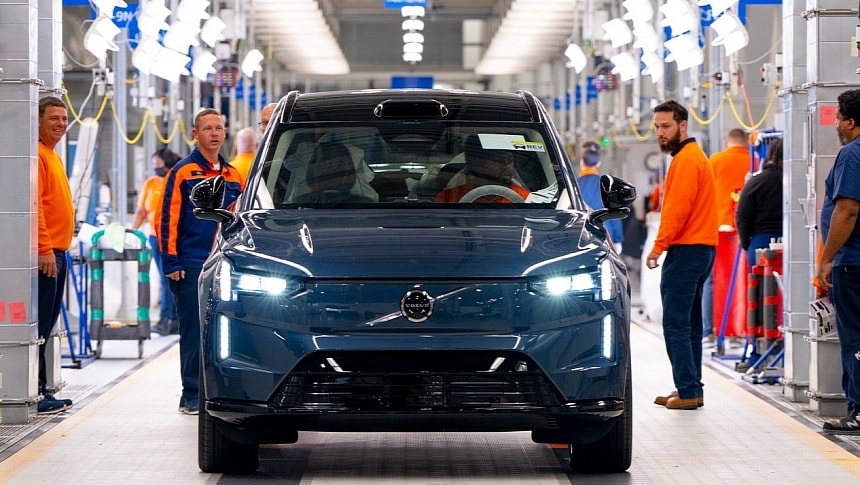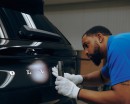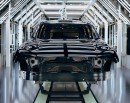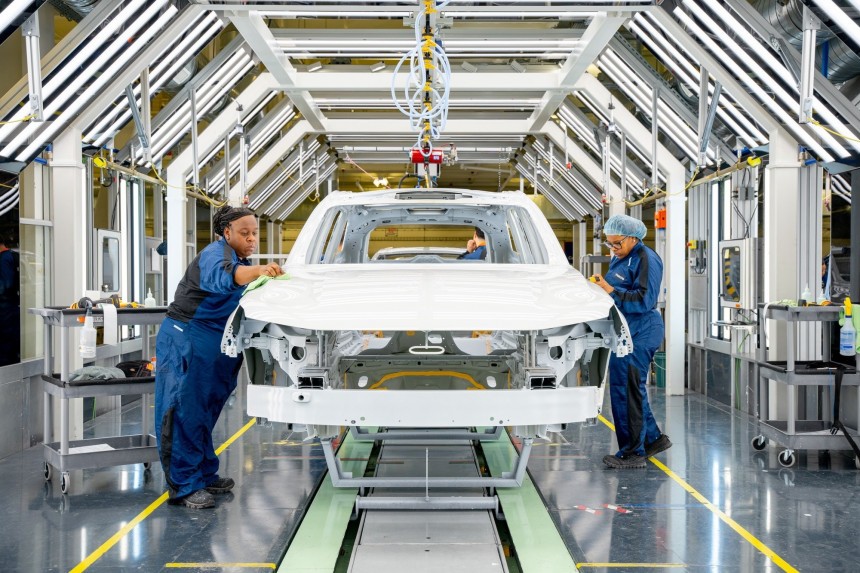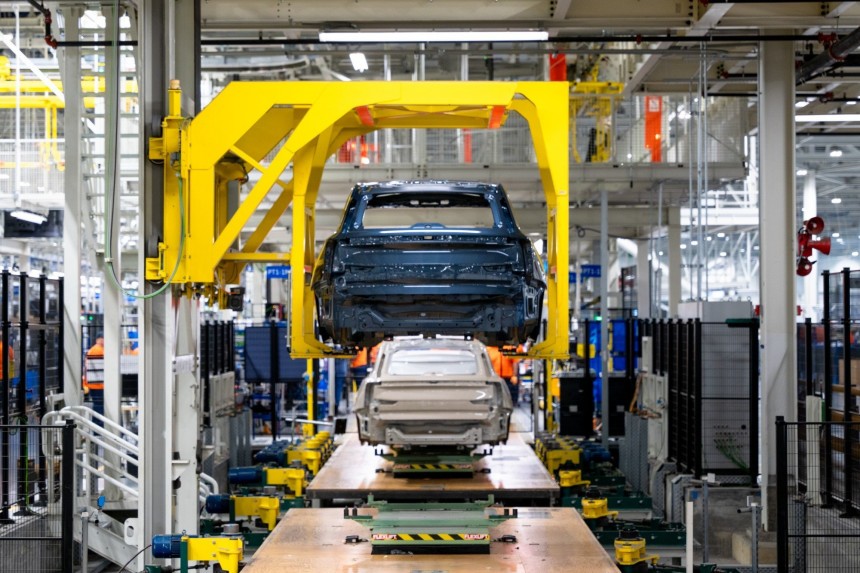Volvo has finally sent its flagship SUV, the EX90, into production. The automaker unveiled the model on November 9, 2022, but production has been delayed for nearly two years.
The Volvo EX90 electric SUV rolls off the production line outside Charleston, South Carolina. That is where Volvo started production, scheduling the first customer deliveries for the second half of 2024. The production center in South Carolina started operating in the summer of 2018.
Today, the facility produces the EX90 as well as the S60 sedan and has a production capacity of up to 150,000 cars per year. Volvo is planning to sell 600,000 electric vehicles by 2025.
Volvo has made significant investments in the facility over these past few years. The firm renewed and expanded the body shop and paint shop. It also installed a state-of-the-art battery production line to serve the EX90 and prepare for a new era: one of a zero-emission lineup, a target that Volvo is planning to achieve long before 2035, the deadline imposed by the European Commission.
The Swedish carmaker is marching ahead towards an all-electric portfolio, even though carmakers such as Ford or Toyota have been pushing the brakes on EV development. Volvo does not seem to be slowing down.
The first EX90 to see the light of day was one painted in Denim Blue, ordered by a customer in the United States, who will receive it later this year.
The EV joins an already large lineup of electric Volvos: the C40 Recharge, the XC40 Recharge, the EX30, and now, the EX90. Volvo has prepared a new ground-breaking core computing technology for its flagship SUV, one that kicks off a new era in terms of safety.
Designed with family drives in mind, sporting a seven-seat, three-row configuration, and labeled as the safest model to date, the Volvo EX90 is equipped with next-generation passive and active safety tech and software, packing a new suite of sensors. It is a system which incorporates a 360-degree camera, five radar sensors, and 16 ultrasonic sensors.
The model is permanently connected, and the system can receive over-the-air updates, which will be delivered by the brand's software engineers, enabled by Artificial intelligence and informed by real-time data collection. Plagued by software issues, Volvo needed time to fix them, subsequently delaying the production start and deliveries of the model.
The latter were supposed to kick off at the beginning of 2024 at the latest, but it hasn't happened yet. The automaker postponed deliveries for the second half of this year.
The EX90 rides on a newly developed platform that incorporates a battery pack with a capacity of 111 kWh. This pack can store enough energy for a drive of up to 373 miles (600 kilometers), according to the WLTP cycle, before the car needs to be plugged in again.
The range-topping version is the Twin Motor Performance, powered by two electric motors, one mounted on the front, and the other one on the rear axle. The two of them deliver a total output of 496 horsepower (503 metric horsepower) and 671 pound-feet (910 Newton meters) of torque, making the SUV accelerate from 0 to 60 mph (0 to 97 kph) in 4.7 seconds.
The lineup starts with the Twin Motor version, which comes with 402 horsepower (408 metric horsepower) and 568 pound-feet (770 Newton meters) of torque for an acceleration from 0 to 60 mph in 5.7 seconds, which makes it one second slower than the range-topping EX90. Order books have already opened, so whoever wants to drive it home will have to pay $76,695, with the $1,295 destination fee not included.
Regardless of the output and range, all EX90 versions have a top speed electronically limited to 112 mph (180 kph), a decision that Volvo made four years ago. This means that none of the new Volvos, 2020 onwards, will be able to go above that speed.
The automaker manufactured its last diesel-powered cars in early February. It was a Volvo V60 that rolled off the production line in Ghent, Belgium, while the last diesel-powered XC90 saw the light of day in Torslanda, Sweden.
Volvo had announced its intention to phase out the diesels in September 2023 during the Climate Week in New York City. The brand had had diesel engines in its lineup for the past 45 years.
However, by forcing the EVs into the market, the brand saw a 70 percent increase in fully electric cars, accounting for a global market share increase of 34 percent in 2023.
The Scandinavians have less than six years to go before they stop selling internal combustion engines. They are also targeting net zero greenhouse gas emissions by 2040.
Today, the facility produces the EX90 as well as the S60 sedan and has a production capacity of up to 150,000 cars per year. Volvo is planning to sell 600,000 electric vehicles by 2025.
Volvo has made significant investments in the facility over these past few years. The firm renewed and expanded the body shop and paint shop. It also installed a state-of-the-art battery production line to serve the EX90 and prepare for a new era: one of a zero-emission lineup, a target that Volvo is planning to achieve long before 2035, the deadline imposed by the European Commission.
The Swedish carmaker is marching ahead towards an all-electric portfolio, even though carmakers such as Ford or Toyota have been pushing the brakes on EV development. Volvo does not seem to be slowing down.
The EV joins an already large lineup of electric Volvos: the C40 Recharge, the XC40 Recharge, the EX30, and now, the EX90. Volvo has prepared a new ground-breaking core computing technology for its flagship SUV, one that kicks off a new era in terms of safety.
Designed with family drives in mind, sporting a seven-seat, three-row configuration, and labeled as the safest model to date, the Volvo EX90 is equipped with next-generation passive and active safety tech and software, packing a new suite of sensors. It is a system which incorporates a 360-degree camera, five radar sensors, and 16 ultrasonic sensors.
The model is permanently connected, and the system can receive over-the-air updates, which will be delivered by the brand's software engineers, enabled by Artificial intelligence and informed by real-time data collection. Plagued by software issues, Volvo needed time to fix them, subsequently delaying the production start and deliveries of the model.
The latter were supposed to kick off at the beginning of 2024 at the latest, but it hasn't happened yet. The automaker postponed deliveries for the second half of this year.
The range-topping version is the Twin Motor Performance, powered by two electric motors, one mounted on the front, and the other one on the rear axle. The two of them deliver a total output of 496 horsepower (503 metric horsepower) and 671 pound-feet (910 Newton meters) of torque, making the SUV accelerate from 0 to 60 mph (0 to 97 kph) in 4.7 seconds.
The lineup starts with the Twin Motor version, which comes with 402 horsepower (408 metric horsepower) and 568 pound-feet (770 Newton meters) of torque for an acceleration from 0 to 60 mph in 5.7 seconds, which makes it one second slower than the range-topping EX90. Order books have already opened, so whoever wants to drive it home will have to pay $76,695, with the $1,295 destination fee not included.
Regardless of the output and range, all EX90 versions have a top speed electronically limited to 112 mph (180 kph), a decision that Volvo made four years ago. This means that none of the new Volvos, 2020 onwards, will be able to go above that speed.
Volvo phased out diesel engines
The Swedish automaker made a bold decision last year when it stopped building diesel engines, despite the fact that, in 2019, the diesel-powered cars accounted for the majority of the vehicles sold in Europe.Volvo had announced its intention to phase out the diesels in September 2023 during the Climate Week in New York City. The brand had had diesel engines in its lineup for the past 45 years.
However, by forcing the EVs into the market, the brand saw a 70 percent increase in fully electric cars, accounting for a global market share increase of 34 percent in 2023.
The Scandinavians have less than six years to go before they stop selling internal combustion engines. They are also targeting net zero greenhouse gas emissions by 2040.
